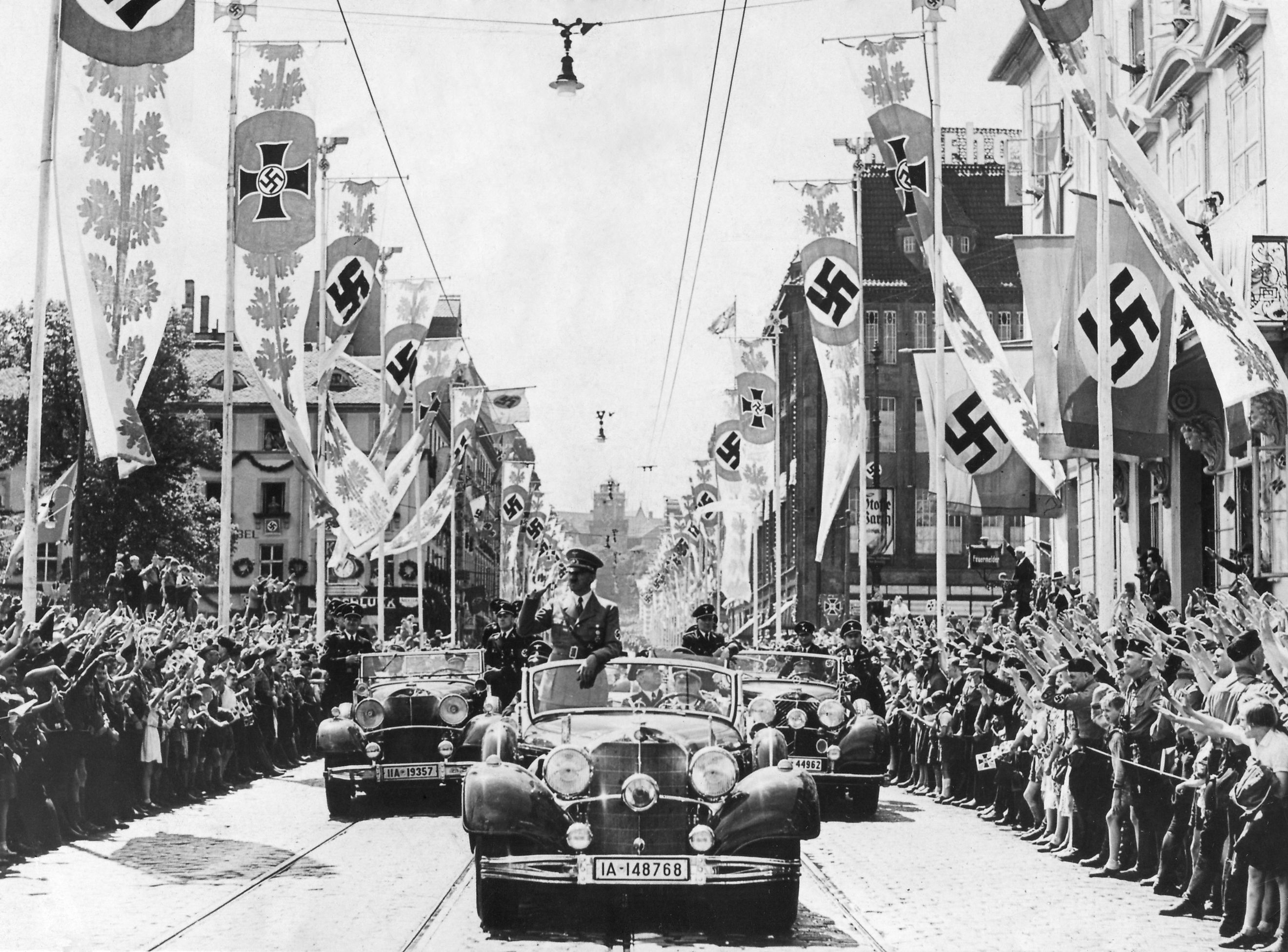
The Rise Of The Nazi Party
The Nazi Party emerged shortly following the end of the First World War. Despite being one of many far-right organizations in Germany at the time, it managed to set itself apart, thereby ascending to power less than fifteen years later. Thus, the story of the Nazis' rise is important since it reveals key details about the party itself and the frailty of German democracy in the 1920s.
The Early Days
On November 11, 1918, Germany signed an armistice that ended World War One. The following year, German leadership also agreed to the Treaty of Versailles, a formal peace treaty that, among other things, forced Germany to pay billions of dollars in reparations. These events prompted significant anger, with the belief that the army had been "stabbed in the back" by Jewish and communist politicians spreading throughout German society. Such conspiracy theories contributed to the rise of countless far-right, antisemitic groups, one of which was the German Workers' Party (DAP).
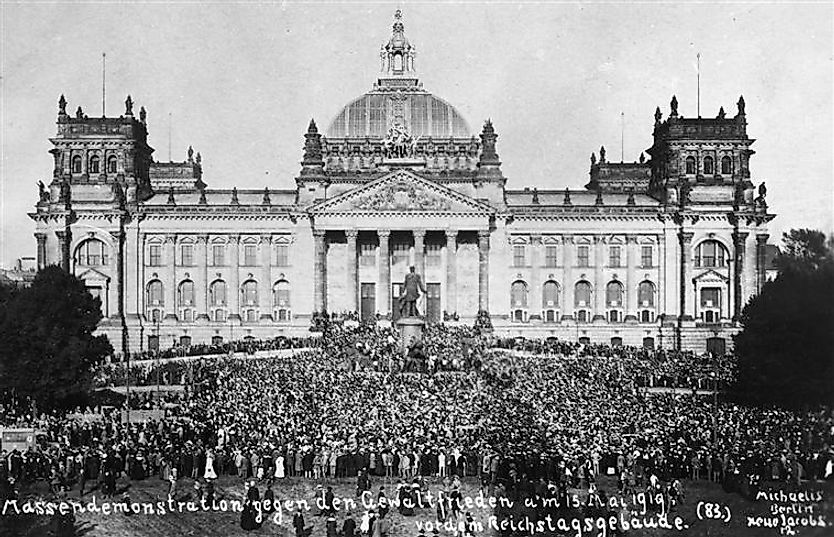
After fighting in World War One, Adolf Hitler remained in the army and was tasked with infiltrating the DAP. However, he was quickly taken with its ideas, as evidenced by a September 1919 letter in which he called for "the removal of the Jews altogether" from German society. Soon afterward, he started working for the DAP full-time, becoming its de facto leader due to his oratory skills.
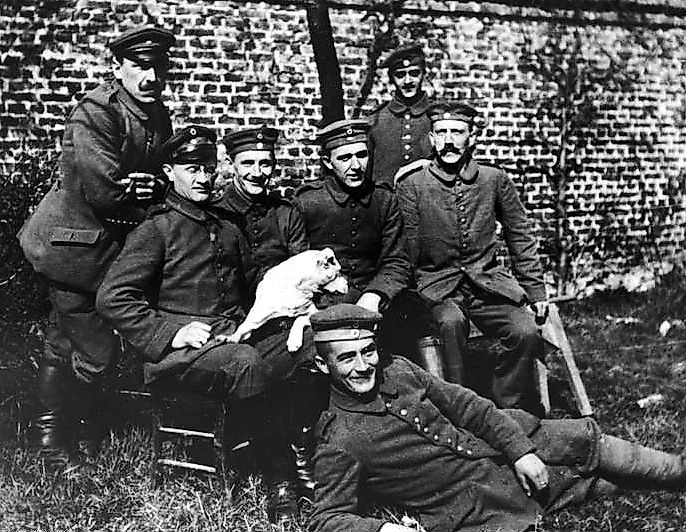
In 1920, the party changed its name to the National Socialist German Workers Party (NSDAP, or Nazi Party for short) to increase political appeal. Thereafter, the NSDAP began to build out its paramilitary wing, which became known as the Sturmabteilung (SA). The SA's eventual successor, the Schutzstaffel (SS), then formed in 1923 as Hitler's personal protection squad. In short, the early 1920s saw the Nazis build out their party infrastructure.
The Beer Hall Putsch
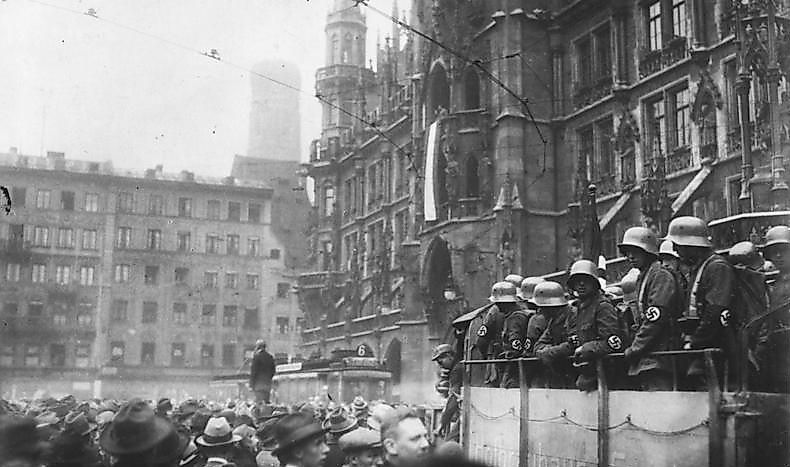
In 1923, Germany's economy was in shambles. The government began printing money to pay off the reparations mentioned above, leading to hyperinflation. Hence, by November 1923, one American dollar was worth 4.2 trillion Reichsmarks. Sensing an opportunity to take advantage of economic-based discontent, the Nazis thus attempted a coup in Bavaria.
On November 8, 1923, Hitler and the SA interrupted a speech by the state commissioner and other Bavarian leaders in a Munich beer hall. He then took the politicians into a side room and persuaded them to help the NSADAP overthrow the government in Berlin. The following day, the Nazis marched on the streets of Munich. In the end, 15 National Socialists were killed in clashes with police, and Hitler fled the scene, only to be arrested two days later.
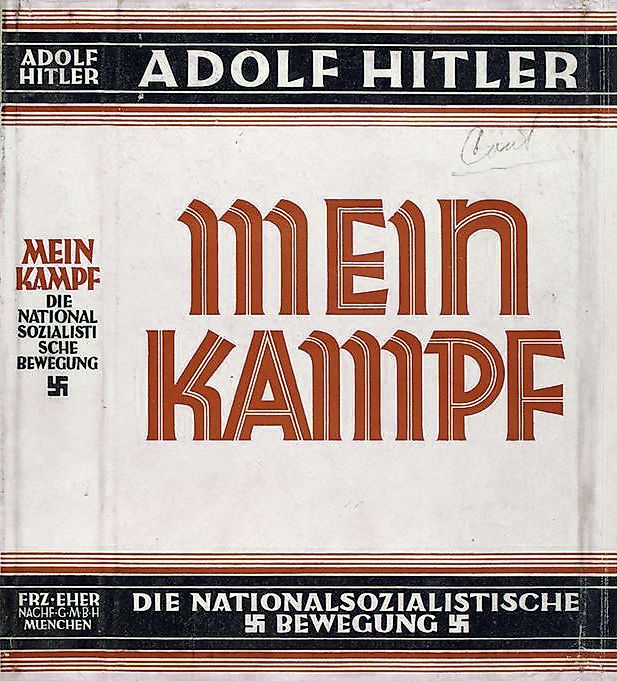
Hitler's trial occurred from February to March 1924, resulting in him being sentenced to five years in prison (he ended up serving less than one). However, despite failing, this coup attempt was enormously important for the Nazis' rise to power. Indeed, intense media coverage of the trial meant that Hitler now had a national platform, with the Nazi sympathetic judiciary allowing him to espouse his beliefs. It also taught the Nazis the importance of working within the established political framework rather than upending it via a revolution. Finally, Hitler's prison sentence gave him time to write Mein Kampf, an autobiographical manifesto that represented a coalescence of his views and goals.
The Great Depression And Electoral Success
In February 1929, about 1.6 million Germans out of 65 million were jobless. However, later that year, the Great Depression began, and by February 1932, over 6 million were unemployed. Furthermore, unprepared for such a crisis, the government could only provide 900,000 people with unemployment or welfare benefits. All this resulted in significant anger and despair, feelings that were amplified by memories of the hyperinflationary period. Suicide rates increased, as did domestic violence, drug abuse, and homelessness. Perhaps most importantly for the Nazis, people were now more willing to turn to political parties that wanted to destroy German democracy.
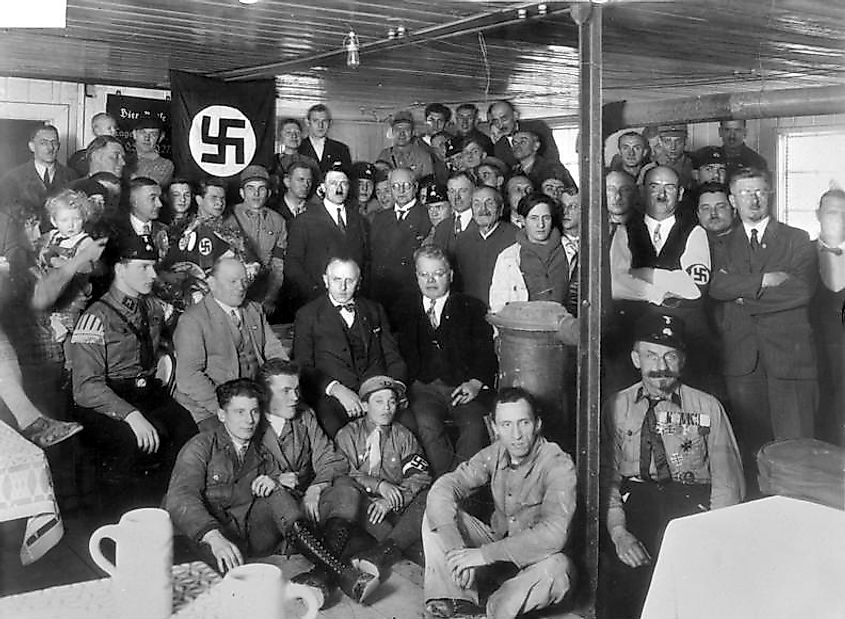
In the 1928 Reichstag election, the Nazis won 14 seats. However, in the 1930 election, following the onset of the Depression, they won 107 seats and 6.3 million votes. The next major elections occurred in the spring of 1932, this time for the presidency. Following a massive campaign, Hitler came in second place, winning 37% of the vote. July then saw new Reichstag elections, in which the Nazis also won 37%. But, many had expected the National Socialists to gain an even higher vote share. Moreover, another round of Reichstag elections in November 1932 saw the Nazis lose two million votes and decrease their seat count from 230 to 196. In other words, by the end of 1932, some thought that the Nazis' time in the political spotlight was coming to an end.
Hitler Is Named Chancellor And Consolidates Power
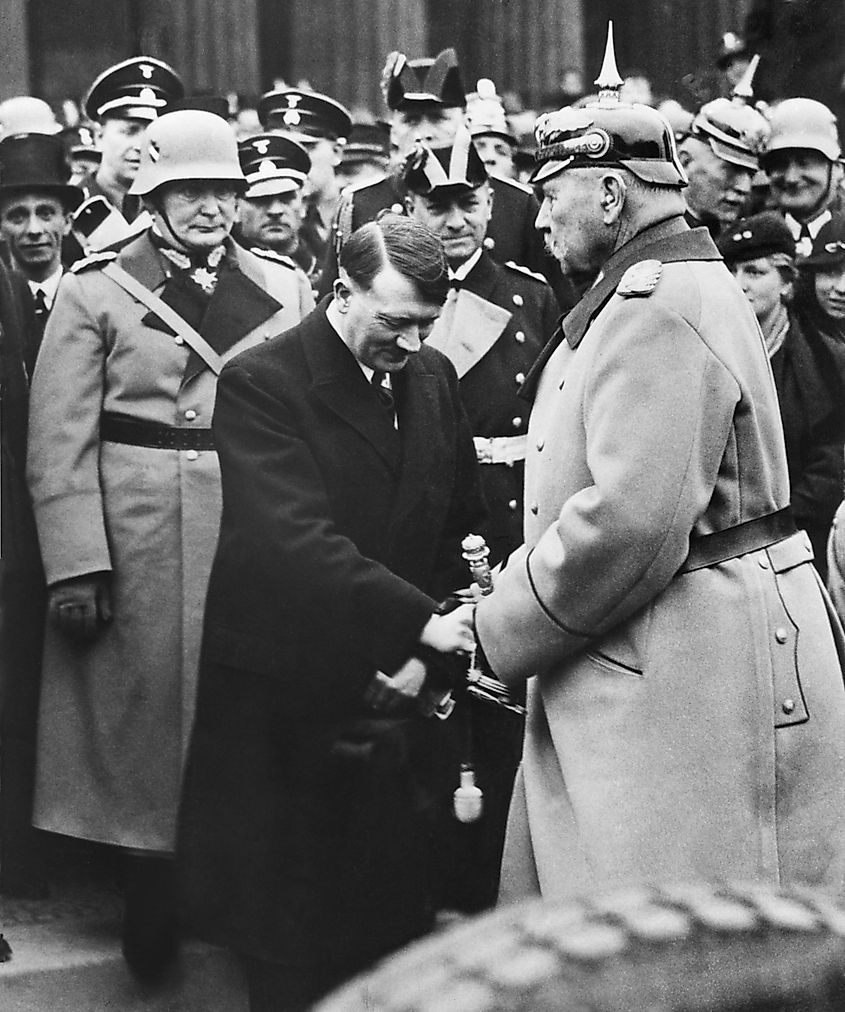
Despite the fading electoral success, Hitler continued to vie for power behind the scenes. Importantly, in the Weimar Republic, the chancellor was chosen by the president, who at the time was Paul von Hindenburg. Hindenburg, a conservative war hero, disliked Hitler, condescendingly referring to him as the "Austrian corporal." However, other conservatives in the upper echelons of government thought that if Hitler was given more power, they could control him. Therefore, on January 30, 1933, Adolf Hitler was named Chancellor of Germany.
On February 27, 1933, the Reichstag caught fire. Hitler immediately blamed this act on the communists and passed the Reichstag Fire Decree, a law that suspended civil liberties. Thereafter, on March 5, another election occurred in which the Nazis, helped by widespread voter intimidation, won 44% of the vote. On March 6, the Communist Party (KPD) was banned. On March 23, Hitler passed the Enabling Act, allowing him to enact laws without the approval of the Reichstag or Hindenburg. Finally, on May 2, trade unions were banned. In just three short months, the Nazis had come to control most major institutions in German society.
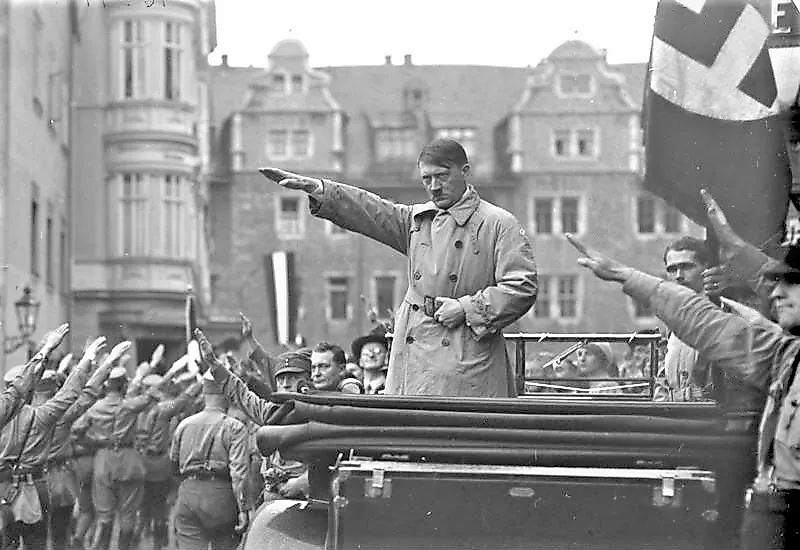
The Nazis' rise to power was a crucial event in German history. Indeed, their growth in prominence is indicative of the socio-political and economic turmoil of the 1920s. Furthermore, the first three months of Hitler's rule resulted in the Nazis consolidating power and destroying the German democracy.











